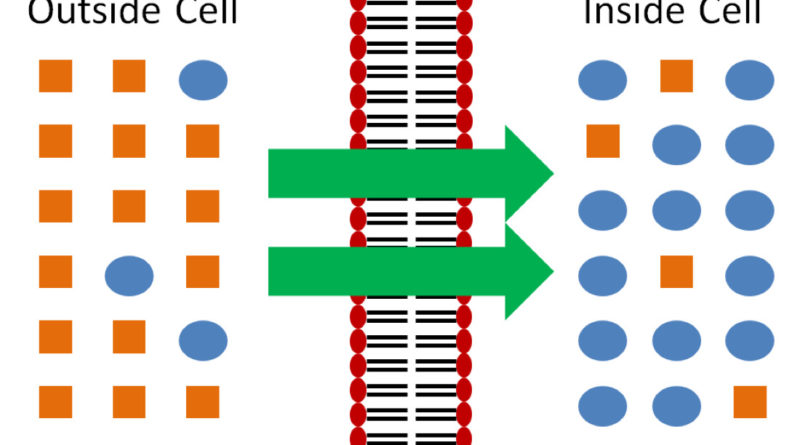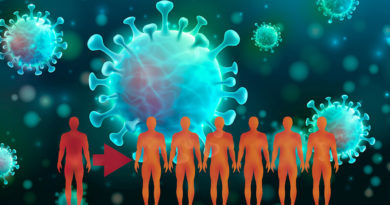Uptake of Nutrients By The Cell
Uptake of nutrients is one of the important step towards growth of any organisms. As we know microbes are found almost everywhere and in almost every environment. There are some common type of nutrients those every cell required.
The intake of nutrients, process should be effective towards nutrients and not other substance. Microbes growing over nutrient poor habitats, they must be able to transport nutrients from dilute solutions into the cell against a concentration gradient. Finally, nutrient molecules must pass through a selectively permeable plasma membrane that prevents the free passage of most substances. But this is not only medium through microorganisms obtain all of its nutrients.
Because of the complexity of the nutrient molecule microbes are not limited to selectively permeable membrane to intake their nutrients.
In other methods, most important of these are facilitated diffusion, active transport, and group translocation.
Eukaryotic microorganisms do not appear to employ group translocation but take up nutrients by the process of endocytosis.
Passive Diffusion
Few substances, such as glycerol, can cross the plasma membrane by passive diffusion. Passive diffusion, often called diffusion or simple diffusion, is the process in which molecules move from a region of higher concentration of one of lower concentration.
The rate of passive diffusion is dependent on the size of the concentration gradient between a cell’s exterior and its interior.
It is understood that fairly large concentration gradient is required for adequate nutrient uptake by passive diffusion (i.e., the external nutrient concentration must be high while the internal concentration is low), and the rate of uptake by passive diffusion, decreases as more nutrient is acquired unless it is used immediately.
Very small molecules such as H2O, O2 and CO2 often move across membranes by passive diffusion.
Facilitated Diffusion
The rate of diffusion across plasma membrane is greatly increased by using carrier proteins, sometimes called permeases, which are embedded in the plasma membrane.
Diffusion involving carrier proteins is called facilitated diffusion.
The rate of facilitated diffusion increases with the concentration gradient much more rapidly and at lower concentrations of the diffusing molecule than that of passive diffusion.
Active transport
Active transport is the transport of solute molecules to higher concentrations, or against a concentration gradient, with the input of metabolic energy. Because active transport involves permeases, it resembles facilitated diffusion in some ways.
The permeases bind particular solutes with great specificity for the molecules transported. Similar solute molecules can compete for the same carrier protein in both facilitated diffusion and active transport. Active transport is also characterized by the carrier saturation effect at high solute concentrations. Never the less, active transport differs from facilitated diffusion in its use of metabolic energy and in its ability to concentrate substances. Metabolic inhibitors that block energy production will inhibit active transport but will not immediately affect facilitated diffusion.
Group Translocation
In active transport, solute molecules move across a membrane without modification. Another type of transport, called group translocation, chemically modifies the molecule as it is brought into the cell.
Group translocation is a type of active transport because metabolic energy is used during uptake of the molecule.
Iron Uptake
Almost all microorganisms require iron for use in cytochromes and many enzymes. Iron uptake is made difficult by the extreme insolubility of ferric iron (Fe^3+) and its derivatives, which leaves little free iron available for transport.
Many bacteria and fungi have overcome this difficulty by secreting siderophores. Siderophores are low molecular weight organic molecules that are able to complex with ferric iron and supply it to the cell. These iron-transport molecules are normally either hydroxamates or phenolates – catecholates.
Microorganism secrete siderophores when iron is scarce in the medium. Once the iro-siderophores complex has reached the cell surface, it binds to a siderophore – receptor protein. Then the iron is either released to enter the cell directly or the whole iron – siderophore complex is transported inside by and ABC transporter.
In E. coli the siderophore receptor is in the outer membrane of the cell envelope; when the iron reaches the periplasmic space, it moves through the plasma membrane with the aid of the transporter. After the iron has entered the cell, it is reduced to the ferrous form (Fe^2+).
Iron is so crucial to microorganisms that they may use more than one route of iron uptake to ensure an adequate supply.



